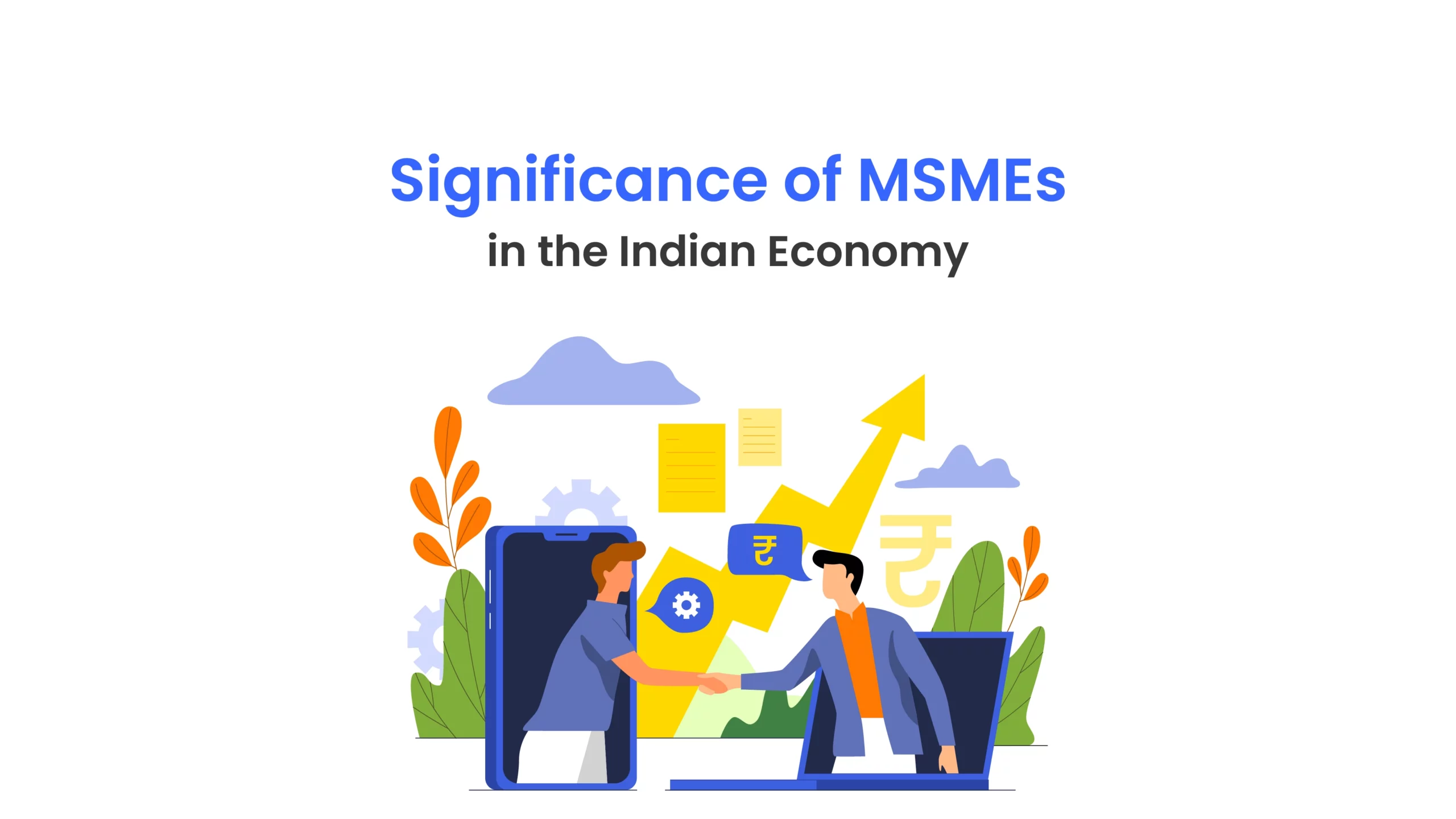Introduction Tally ERP 9 is one of the most popular accounting software in the Indian subcontinent. The company started in the year 1991 and, from then, it has seen tremendous growth with the MSMEs in India. The main reason behind this growth of Tally ERP is that it has a robust set of features necessary for accounting people. Why does an organization need an ERP? So, the counter-critical question is, why do you need to invest your time in an ERP solution for your business? There are many use case scenarios in which a business may need an ERP — some of them are listed below: So there are multiple use case scenarios for which your organization may need an ERP. Further in this article, we will discuss the advantages of ERP software. Advantages of Tally ERP 9 Numerous advantages of Tally ERP 9 will help your business to thrive in the market, some of them are listed below: These advantages of Tally ERP will help you to gain an edge over your competition and a better market position. Conclusion An ERP, in general, is a valuable addition to your business that will help you streamline numerous processes in your organization, resulting in better optimization. Thus, it will give you greater flexibility and a clear path toward a better business. There are many ERPs in the market, but Tally is the most robust platform in the lot.
Features of Tally: Streamlining Your Accounting Processes
Exploring the Key Features of Tally Tally is a powerful accounting software that simplifies financial management and streamlines accounting processes. Let’s delve into the key features of Tally and understand how they can optimize your financial operations. Comprehensive Accounting Tools Tally offers a comprehensive suite of accounting tools to effectively manage your financial transactions. You can create and maintain ledgers, record journal entries, and generate essential financial statements such as balance sheets, profit and loss statements, and cash flow statements. With Tally, you can ensure accurate and up-to-date books of accounts. Efficient Inventory Management For businesses dealing with products, efficient inventory management is vital. Tally’s robust inventory management feature will enable you to effectively track and control your stock. You can create stock groups, define units of measurement, and manage multiple stock locations. Tally allows you to monitor stock movements, set reorder levels, and generate reports to analyze inventory levels, valuation, and turnover. F Statutory Compliance Made Easy Complying with tax and regulatory requirements can be complex, but Tally simplifies the process. It supports various tax systems such as GST, VAT, TDS, and TCS, ensuring accurate calculations, reports, and returns. Tally also facilitates e-invoicing and e-way bill generation, helping you comply with the relevant regulations and streamline your compliance processes. Seamless Banking Integration Tally seamlessly integrates with banking systems, making financial transactions smooth and efficient. You can reconcile bank statements, process electronic fund transfers, generate payment vouchers, and print cheques directly from Tally. By importing bank statements, you can reconcile them with your accounting entries, ensuring accuracy and saving time in the process. Insightful Reporting and Analysis Access to timely and insightful financial reports is crucial for making informed business decisions. Tally provides a wide range of reporting and analysis tools to help you gain valuable insights into your business performance. You can generate reports such as sales analysis, purchase analysis, profitability analysis, and aging analysis. Tally’s graphical representations and drill-down capabilities make it easy to understand complex financial data and identify trends and patterns. Robust Data Security and Backup Data security is of utmost importance, and Tally understands this concern. It offers robust security features to protect your financial data from unauthorized access. You can assign different access levels to users, ensuring that sensitive information is accessible only to authorized personnel. Additionally, Tally provides data backup and restore options, ensuring the safety of your data and allowing you to recover it in case of any unforeseen events. GST Features in Tally ERP 9 Before starting into the GST features of Tally ERP 9, it is essential to clear the basics of the Tally. Creating a Company in Tally It is critical to know about company creation in the Tally before implementing GST features in Tally; thus, follow these steps to create a company in Tally. So here are the steps to create a company in Tally After creating a company, you can enable GST features in Tally. Enabling GST Features in Tally After creating a company in Tally, follows these steps to enable GST features in Tally: There will display another screen on which you can set the GSTIN details of the company. Creating Ledgers on Tally After creating a company and activating GST features, create ledgers to enable accounting features: How does GST work in Tally? The process of GST in Tally is similar to the older taxes such as VAT, CST, or Service Tax. Therefore, on the accounting voucher screen plugin, the details of the accounting voucher and the tax will be calculated automatically by Tally. Conclusion In conclusion, the key features of Tally empower businesses to streamline their accounting processes and effectively manage their finances. From comprehensive accounting tools to efficient inventory management, simplified statutory compliance, seamless banking integration, insightful reporting and analysis, and robust data security and backup, Tally offers a comprehensive solution to optimize financial operations. By leveraging these features, businesses can enhance efficiency, make informed decisions, and achieve financial success.
Advantages of Cash Flow for MSMEs
Introduction Cash flow is an integral part of your business, and though the name seems pretty straightforward, the concept of cash flow is complicated. A properly managed cash flow is the first step towards better business and growth. So understanding the advantages and disadvantages of cash flow is necessary to succeed and sustain your business in the long run. Advantages of Cash Flow for Your Business Understanding the benefits of cash flow is necessary before comprehending how its management will increase the impact of its advantages. 1) Better Lending and access to capital: Though it seems counterintuitive, good cash flow can give you access to better lending options. It can showcase the financial strength of your organization. Moreover, you will have wider access to cash flow-based credit solutions like CF Pay Later by CredFlow, which will give you a credit limit of Rs.30,00.000 that you can use to do vendor payouts. It needs no collateral as it is a cash-flow-based solution. 2) Expand Business with good cash flow: A good and healthy cash flow in your organization would help you manage your operations efficiently. Whether it is your working capital or vendor payments — with good cash flow, your product inventory will grow, giving you more opportunities for the expansion of your business. Also, you can negotiate better prices with timely vendor payouts. Thus, you can position yourself better and negotiate discounted prices with your vendors. Therefore, good cash flow will help you get the capital you need to grow your company. 3) Reduction in running debts: A good cash flow will help you reduce previous debts that you have to incur during the initial phase of the organization, i.e., to pay for salaries, wages, and all the other necessary expenses. What is a Cash Flow Statement, and Why do you need one A cash flow statement is a financial statement that defines the spending of cash during the accounting period. It will give a brief overview of the sustainability of your operations in long and short-term durations. There are three sections of a cash flow statement: So addressing the elephant in the room, why do you need a cash flow statement? Conclusion Thus, your cash flow is an essential pillar in your organization — helping your organization to navigate through difficult economic situations. Creating cash flow statements is critical to place your organization in a strategically advantageous position by ensuring you always have good working capital.
Significance of MSMEs in the Indian Economy
MSME industries are defined on the basis of the investment they have done in their businesses and the turnover as per the MSME Act of 2006. These small-scale industries Introduction MSMEs are the backbone of the Indian economy — they have contributed 30 per cent to the GDP in the financial year of 2022. They are a testament to the zeal of the Indians to thrive in any way possible — that is how the small-scale industries scaled to big brands such as Mother Dairy or Verka. Furthermore, realising the potential of the SMEs government of India launched tremendous schemes for this sector, ranging from the emergency credit line to e-commerce marketplaces such as ONDC. Role of MSMEs in Job Creation The MSME sector generates numerous jobs for both skilled and unskilled labour, thus becoming one of the largest employment generators in India. Also, they brought a certain level of industrialization to rural areas cost-effectively by establishing industries in the countryside. In this sector, it has the potential to generate more employment than big industries because they require low capital to set up but need numerous workforce to sustain the operations. An example of this phenomenon is Amul; it started in the 1940s as a small cooperative in Gujrat. It scaled its operations through India, and today, it employs 1.6 million people. Though MSMEs are facing considerable challenges in creating jobs, such as: Why does MSME is an Integral Part of the Supply Chain in India It is imperative to think about Indian supply chains working without the intervention of MSMEs at various touch points. For instance, in the global supply chain, MSMEs are the largest auto parts manufacturers exporting to the European continent. Indian government launched the IndiaXports portal, which will provide information to MSMEs to compete in the global market. It will help them understand the rules and regulations of foreign countries that they need to follow to do business in any overseas markets. Thus, MSMEs have the potential to be globally competitive and market leaders in their respective areas of expertise. Conclusion The MSME sector is the principal driver of the transition of the Indian economy from an agricultural-dependent market to an industrialized economy. There is a long way with hurdles and challenges along the way, but without the MSME sector, the Indian economy cannot develop.
Cash Flow vs Profit — Why Both of them are Crucial for Business
Introduction Cash flow and profit are the two sides of the same coin that will help you to raise your business to new heights. Although these terms are distinguishable from each other considerably, they are dependent on each other. So, you must understand cash flow vs profit. Further in this article, we will discuss how both of these metrics will impact your organization. Cash Flow — The Life Blood of Your Organization Cash flow is the total inflow and outflow of capital from your organization — it determines the working capital of your business — if you want the growth of your organization, you need to grow the cash flow. Moreover, a cash flow statement is necessary because it will help you to demonstrate credibility and showcase the financial health of your organization in front of your key stakeholders. So optimizing your cash flow will help you in the growth of your organization. There are applications like CredFlow which will help you to get a 360-degree view of your revenue line, and you can automate the process of sending payment reminders. So, it will help you to improve your cash flow and reduce the payment collection time, thus, improving your working capital. Profits — Source of the Fuel for the Growth Engine of Your Business Profits are the net revenue of your organization after paying up all the business expenses. So whatever income you take home from your business is the net profit of your organization, through which you can run your expenses or reinvest in your business for growth. Therefore, the profit of your organization will drive the expansion of the business because you can expand your business with the capital you earn. Thus, if your business is profitable, it will help you to grow your organization and expand in various verticals. Budget planning is also important for the growth of your organization. How Cash Flow Uplift Profits When your organization has a good and healthy cash flow, you can invest in newer business opportunities, thus expanding the sources of revenue. Moreover, with a positive cash flow, you can lower the overall debt of your organization by paying the interest through cash flow. So, the overall profitability increases in your organization. Furthermore, expand your product inventory with a good cash flow, which will, in turn, raise your turnover and take-home income. Therefore, positive cash flow can help in increasing the profitability of your organization through indirect means. It can be the stepping stone toward a better future for your organization, but it does not guarantee that your business will remain profitable in the future. There are instances where the cash flow is negative, and the business is still running with good profit. Though in those cases, by the end of the day, organizations cannot sustain themselves in the long term. Conclusion At last, cash flow is crucial for the business as much as the profits of the organization. These are both metrics that will help you to grow your business and flourish. As both of these metrics are different but both of them are equally important for the next phase of growth for your business. So if we want to grow our business cash flow vs profit is equally important. Therefore, creating a budget plan is important which includes both profit and cash flow statements.
Why Making a CashFlow Budget is Crucial for your Business
Your Cash flow will determine the growth of your business! One of the major reasons that businesses fail is that they run out of cash. Thus it becomes crucial to budget your cash flow, which helps you to grow your business in difficult economic situations. Therefore, it is essential to create a cash flow budget so that you can predict future working capital needs. Further in this article, we will discuss what a cash flow budget is and its importance of it in your business. What is Cash Flow Budget A cash flow budget is the financial budget through which you will map the inflow and outflow of your capital. Along with that, you would make future projections of your working capital to ensure that you would never run out of cash to run the day-to-day operations of your business. Thus, you can benchmark the funds you need to allocate to different areas in your organization. Creating a cash flow budget is critical because it would give you clarity about the financial health of your organization, and you can allocate funds to underperforming areas. A cash flow budget is an essential component of your overall budget that will help you to optimize your cash flow. For creating a cash flow budget, you need to have a complete understanding of the collectibles and receivables of your organization. Therefore, CredFlow is an account receivable SaaS platform with CF collect feature. It will give you a complete overview of your revenue line with a complete understanding of your debtor’s pending invoices and vendor payments. Components of CashFlow Budget There are some essential things you should need to include in your cash flow budget: Why CashFlow Budget is Important A cash flow budget is crucial for your organization because it will help you in better decision-making as you have a clearer picture of the financial health of your organization. Therefore, you can plan your investments, hiring decisions, etc. Moreover, you can predict cash shortages and cut down on expenses or source additional finance for your organization. So, a cash flow budget will help you streamline your credit line and thus grow your business exponentially. Furthermore, you can use your cash flow budget as a representation of the strong financial health of your organization in front of your stakeholders. Conclusion At last, a cash flow budget is an essential part of the overall financial planning of your organization. When you have a clearer understanding of the capital requirements, then you can brace your organization for any forthcoming economic downturns. For MSMEs in India cash flow is the best defense against any adverse financial conditions.
What is a Bills Receivable Report in Busy Software?
In Busy Software, a Bills Receivable Report is a financial report that provides a detailed summary of all the Invoice receivable that a company has issued to its customers. The report provides information on the amount, due date, and customer details for each bill receivable. The report helps companies keep track of their outstanding Invoice receivable, which is important for managing cash flow and ensuring timely payment from customers. It also helps companies identify overdue Invoice receivable and take appropriate actions, such as sending payment reminders or pursuing legal action for non-payment. In Busy Software, the Invoice Receivable Report can be customized to include specific date ranges, customer groups, and other relevant criteria. The report can be exported in various formats, such as PDF, Excel, or HTML, for further analysis and sharing with other stakeholders. How to view the Bills receivable report in Busy software? You can view the Invoice Receivable Report in Busy software by following these steps: By following these steps, you can easily view the Invoice Receivable Report in Busy software and manage your accounts receivable efficiently. Example of bills receivable journal entry in Busy Software Sure, here’s an example of a Bills Receivable journal entry in Busy software: Suppose ABC Company sold goods worth Rs. 50,000 to XYZ Company on credit and issued a bill for the same with a due date of 30 days. The journal entry for this transaction would be as follows: How do Bills payable differ from Bills receivable? Invoice payable and Invoice receivable are both financial instruments, but they represent opposite sides of a transaction. Invoice payable are a liability for a company and represent a written promise to pay a certain amount on a specific future date to the creditor who holds the bill. They are typically issued by a company to its suppliers for goods or services received but not yet paid for. Invoice receivable, on the other hand, are an asset for a company. It represent a written promise to receive a certain amount on a specific future date from a debtor. They are typically issued by a company to its customers for goods or services provided but not yet paid for. In summary, Invoice payable represent a company’s obligation to pay a debt, while Invoice receivable represent a company’s right to receive payment for goods or services provided. Differences between Accounts receivable and Bills receivable Accounts receivable and Invoice receivable are both types of assets that represent money owed to a company by its customers. However, there are some differences between the two. Accounts receivable refers to money owed to a company for goods or services that have been delivered but not yet paid for. Invoice receivable, on the other hand, refers to a written promise to pay a certain amount on a specific future date. Accounts receivable typically do not involve any formal documentation beyond the original invoice or receipt. Invoice receivable are often accompanied by a promissory note or other written agreement. Accounts receivable generally have a shorter payment period, typically ranging from a few days to a few months. Invoice receivables have a longer payment period, ranging from a few months to several years. Invoice receivables are often negotiable, which means that they can be transferred to a third party. Accounts receivable are not negotiable. Invoice receivable often carry an interest rate that compensates the holder of the note for the time value of money. Accounts receivable do not. To summarize, Both accounts receivable and Invoice receivable are important components of a company’s assets. But they represent slightly different types of financial transactions. What are payment receipts and Payment Accounts? The Receipts and Payments Account is a summary of all the cash receipts and payments made by an organization during a specific period, typically one year. It is an important part of the accounting records of an organization and provides a comprehensive view of the organization’s cash inflows and outflows during the period. Format of receipts and payments account in Busy Software In Busy software, the format of the Receipts and Payments Account may vary depending on the version and configuration of the software, but typically it includes the following columns: The format may also include additional columns for narration, cheque number, and other details as per the requirement. The report can be generated for a specific period, such as a month, quarter, or year, and can be exported in various file formats, such as Excel or PDF, for further analysis or printing. How to view the report in Busy Software? To view the Receipts and Payments Report in Busy software, you can follow these steps: By following these steps, you can easily view and generate the Receipts and Payments Report in Busy software. Steps to configure the Payment Receipt and Payments Account report in Busy Software To configure the Receipts and Payments Account report in Busy Software, you can follow these steps: By following these steps, you can easily configure the Receipts and Payments Account report in Busy Software to generate customized reports that meet your specific requirements. Process to display the Closing/Opening Summary Report of Bank/Cash in Busy Software To display the Closing/Opening Summary Report of Bank/Cash in Busy software, you can follow these steps: By following these steps, you can easily display the Closing/Opening Summary Report of Bank/Cash in Busy software. The report provides a quick overview of the account balance for a specific date range and can help you keep track of your cash flow and financial position.
Optimize your Cash Flow to Thrive your Business in the Recession in India
Cash flow is the lifeblood of your business, and sustaining a good cash flow will help your business even in the rocky waters. Therefore, Indian SaaS platforms such as CredFlow will increase your working capital by helping you rearrange your funds and expenditure according to business analytics. A critical point of failure for businesses is that they run out of the working capital needed to sustain the organization. So when the Recession in India is at its peak, you don’t want to be in a difficult situation! What is Cash Flow Management So, without further adieu, let’s understand what cash flow management means. When you manage your cash in and out of business, you are managing your cash flow. Along with that, it entails the process of predicting your future cash flow to ensure that at any given moment, you should have working capital to run your business. So, cash flow management is crucial for financial planning to ensure that your business does not face a cash crunch in the near future and that your expenditures and requisitions reflect the same. Business and Recession in India: Safeguard your Business with Cash Flow Optimization So how will cash flow optimization help you to grow your business in a recession? When it is an economic downturn, you don’t want your debt should pile up because a recession will incur losses to your business, and limited credit is available for your business. Thus, you need to monitor every expense of your organization. Along with that, you have to forecast the future expenses your business will incur. It is because if you are unable to pay the bills in time to your vendors and business partners, it will deteriorate your business reputation. Though MSMEs in India can avail of credit through their cash flow; thus, helping you to maintain your capital requirements. So, monitoring your spending in difficult economic situations will help you to maintain your working capital by monitoring your expenditure. Along with that, you can identify opportunities to reduce the operating cost of your business. For instance, there can be discriminatory spending, more than needed employee count, etc., through which you can reduce the operating cost. Forecasting Finances During Recession in India Businesses need to learn the crucial skill of anticipating problems beforehand and brace themselves for the impact. Therefore, optimizing cash flow can help your business brace against the potential crunch of your working capital. Also, you can negotiate better deals with businesses and vendors when you understand the cash flow minutely. You can understand where you need to cut down costs to maintain your working capital. Financial management is critical for your business, and understanding your key areas will help you prepare your business for the financial impact due to Recession in India. With that, you can set realistic budget goals for your organization. Conclusion At last, everything boils down to the fact that when you optimize your cash flow, its impact will be on every segment of your business. Cash Flow is the essence of your business, thus; when you optimize this, you can run your business smoother for every vertical in your enterprise.
Capital Through Cash Flow – Bridging Credit Gaps for MSMEs
MSMEs’ main problem is that they face a cash crunch repeatedly, thus hampering their ability to run their business efficiently and reach their peak potential. India can build globally competitive small scale industries and MSMEs, but government support is essential to achieve this dream. So, to meet the credit demands of the MSMEs, cash flow capital (capital based on cash flow lending) is the new age concept that will help them to get access to working capital to run their business. So cash flow-based lending is generally disbursed by NBFCs rather than traditional brick-and-mortar banks. Thus, generally, people are unaware or apprehensive about this type of loan. Though there are some reputed organizations in India that offer cash flow-based lending, such as CredFlow. What does Cash Flow, Lending Means? So, what does cash flow-based lending means? There are two different methods of lending asset-based lending, which means you can borrow money based on the liquidated value of the assets you hold, mentioned in your balance sheet. On the other hand, cash-flow lending allows you to get access to capital through the future projections of your cash flow. So, your business is getting access to capital based on the revenues you can generate as per the historical data. Also, credit ratings are crucial in this type of lending for measuring the ability of the business to repay the loan and mitigate the risk. For instance, if an MSME wants capital for the payroll of its employees, the business can apply for a cash flow-based loan. They can pay the staff and repay later with all the interest on the profits. So, it will help you to get quick access to the working capital that will not hinder the business. Pros and Cons of Capital via Cash Flow So, there are both sides to cash flow-based lending. Though for MSMEs are highly advantaged through cash flow-based lending because of the following reasons: Though here are some of the cons of cash flow lending: So, optimizing cash flow is the best defense against unexpected financial situations because your capital in hand increases with better cash flow. Conclusion At last, cash flow-based lending is best for MSMEs because, without the requirement of collateral, businesses can take loans which helps them to remain afloat. Cash flow-based capital will help fulfill the credit gap of MSMEs. Through cash flow lending and supply chain financing, we can ensure that cash crunch becomes the problem of the past for our MSMEs.
How Small Scale Industries can Compete on Global Level
MSMEs are the cornerstone of the Indian economy as it is the second largest employer after agriculture. So, it is crucial to building an ecosystem in the Indian economy where our industries can grow to become globally competitive. There are ample problems small-scale industries are facing, like, lower productivity, lack of capital, missed opportunities for innovations, etc., and due to this, it is difficult for MSMEs to grow on a global level. IT Infrastructure: A Golden Opportunity for Government and MSMEs to Collaborate MSMEs require cost-effective solutions for their operations. Cash-strap businesses can’t invest in the R&D of newer solutions and build IT infrastructure for their organizations. Though, on the other hand, due to the rise of Indian fintech, SaaS-based platforms like CredFlow are helping MSMEs to optimize their cash flow, and government intervention is necessary to build their infrastructure. So, to compete on a global scale, their infrastructure must remain up to date, which is difficult because of the cash constraints. The solution to this problem is a shared infrastructure model through which multiple MSMEs can share resources to grow their business. They don’t have to spend capital and utilize their saved resources more efficiently. It can work on the public-private partnership model so that employment generation is manifold. Therefore, through a single scheme MSME sector can grow exponentially. Shortage of Skilled Labour: A Critical Problem for Small Scale Industries Skilled labor shortages are a big concern for the MSMEs — with shared IT infrastructure, we can reduce that dependence on MSMEs. Rather than recruiting and relying on the internal staff, they can have common resources saving them both bandwidth and reducing the burden on their financial capital. Also, due to the nature of the MSMEs, their sole focus is to keep the business running. They do not have the liberty to expand into other ventures and skill their labor. So, without increasing their standards and operations to the global level, they can’t go into global markets. MSMEs Hold the Potential for Global Competition The biggest strength of MSMEs is that they are adaptable to changing situations. Through the uncertain times of the pandemic, MSMEs thrive because of their resilience. For instance, in the auto sector, MSMEs got success — when Maruti Suzuki entered the market, a large number of the MSMEs started manufacturing auto components. Nowadays, India is one of the biggest manufacturers of auto spare parts. The reason that Indian MSMEs were able to prove their mettle in the auto sector because of two reasons: So Indian MSMEs are resilient and adaptable to newer situations and can mend their business as per the demand and supply. Conclusion So, small-scale industries can go global, albeit given enough government support. If India Inc. wants to achieve a five trillion dollar economy, we need to develop our MSME sector. It is the second largest employee after the agricultural sector. Therefore, following these initiatives, we can build globally competitive MSMEs.










